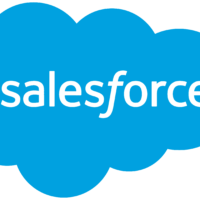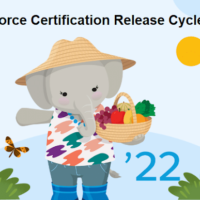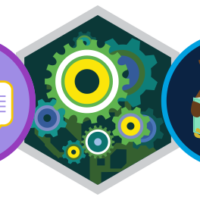1.What is Salesforce and what are its features?
Answer: Salesforce is a cloud-based CRM platform that offers various features such as contact management, sales automation, marketing automation, customer service and support, analytics, and custom app development.
2. What is a custom object in Salesforce?
Answer: A custom object is a user-defined data structure in Salesforce that stores information unique to an organization.
To create a custom object, go to Setup > Object Manager > Create Object, then fill in the object details, such as object name and record name format
3. What is a Junction object in Salesforce?
Answer: A junction object is an object that represents a many-to-many relationship between two objects. It contains two master-detail relationships and is used to associate records from two different objects.
4. What is a Salesforce profile and how is it used?
Answer: A Salesforce profile is a set of user permissions that determine what actions a user can perform within Salesforce, such as accessing specific objects, fields, and records. Profiles are used to control user access to the platform.
5. What is Reports in Salesforce ?
Answer: Reports in Salesforce are used to summarize, analyze, and display data from one or more records in a tabular format. There are different types of reports:
- Tabular: Shows data in rows and columns.
- Summary: Aggregate data with grouping and subtotals.
- Matrix: Shows summarized data in a grid with rows and columns that can be grouped by up to four fields.
- Joined: Combines data from two or more objects.
- Custom Summary Formulas: Calculate values for fields using custom formulas. Reports can be generated, saved, and shared with other users in an organization, and can be used to make informed decisions based on data.
6. What is the difference between a profile and a role in Salesforce?
Answer: A profile defines the user’s level of access to objects, fields, and data in Salesforce. A role, on the other hand, determines the level of access that a user has to records owned by other users.
7. What is a lookup relationship in Salesforce?
Answer: A lookup relationship is a type of relationship in Salesforce that allows a record in one object to be related to a record in another object, without creating a new record
8. What is a master-detail relationship in Salesforce?
Answer: A master-detail relationship is a type of relationship in Salesforce that links two objects, where the detail object is dependent on the master object. When the master object is deleted, the related detail objects are also deleted
9. How do you configure page layouts in Salesforce?
Answer: To configure page layouts, go to Setup > Object Manager > Page Layouts, then select the layout you want to modify, add or remove fields, sections, and custom buttons.
10. How do you ensure data security in Salesforce?
Answer: Ensuring data security in Salesforce can be done by setting up user roles and profiles, implementing sharing rules, using field-level security, using encryption for sensitive data, and regularly reviewing security settings.
11. What are some common reporting tools in Salesforce?
Answer: Some common reporting tools in Salesforce are reports, dashboards, and the Einstein Analytics platform.
12. What is the difference between a report and a dashboard in Salesforce?
Answer: A report in Salesforce provides a detailed view of data, while a dashboard provides a high-level visual representation of data.
13. What is the Salesforce app exchange?
Answer: The Salesforce App Exchange is an online marketplace where Salesforce users can find and install pre-built applications and custom components to extend the functionality of their Salesforce instance.
Answer: Roles determine what users can see in Salesforce based on where they are located in the role hierarchy. Users at the top of the hierarchy can see all the data owned by users below them. Users at lower levels can’t see data owned by users above them, or in other branches, unless sharing rules grant them access. Roles are optional but each user can have only one.
Role Hierarchy open up access to those higher in the hierarchy so they inherit access to all records owned by users below them in the hierarchy. Each role in the hierarchy represents a level of data access that a user or group of users needs. For example, you can restrict access to Candidates by setting the organization–wide default to Private, but allow recruiters to view and edit the candidate records that they own
What is a Picklist field in Salesforce?
Answer: A picklist field in Salesforce is a field that allows you to select a value from a predefined list of options
Answer: There are several types of fields in Salesforce, including:
-
Text: stores alphanumeric characters, such as a person’s name or a product description.
-
Number: stores numerical values, such as a price or quantity.
-
Picklist: allows selection of a value from a predefined list of options.
-
Checkbox: stores a true/false value, used for binary selection.
-
Date/Time: stores a date or time value, used for tracking events or deadlines.
-
Currency: stores a monetary value, used for financial data.
-
Email: stores email addresses, used for communication with contacts.
-
Phone: stores phone numbers, used for communication with contacts.
-
URL: stores web addresses, used for linking to websites.
-
Lookup: creates a relationship between two objects, such as between an account and a contact.
-
Master-Detail: creates a parent-child relationship between two objects, such as between an account and its related opportunities.
-
Formula: calculates values based on other fields, used for automating data management tasks.
-
Multi-Select Picklist: allows selection of multiple values from a predefined list of options.
-
Geolocation: stores location data, such as latitude and longitude.
-
Base64: stores binary data, such as images or documents, as a base64-encoded string
What are different types of objects in Salesforce?
Answer: The different types of objects in Salesforce are:
- Standard . objects: Accounts, Contacts, Leads, Opportunities, Cases, etc.
- Custom objects: User-defined objects to store specific business data.
- External objects: Data from external sources accessed through Salesforce Connect.
- Big Objects: Large data objects for handling big data.
- Junction objects: Connect two other objects in a many-to-many relationship.
How would you manage record access in Salesforce?
Answer: Record access in Salesforce can be managed using: Sharing Rules, Role Hierarchy, Manual Sharing, Queues, Public Groups, and Account Teams.
Explain Organization-wide defaults (OWD)
Organization-wide defaults (OWD) specify the default level of access users have to each other’s records. You use organization–wide sharing settings to lock down your data to the most restrictive level, and then use the other sharing tools to selectively give access to other users.
For example, you can give all employees access to an object called Candidate to allow anyone to add a candidate to the database. But you can restrict access to Positions so that anyone can see the jobs available but only the employees with the proper permissions can edit them. OWD can be Private, Public Read Only, Public Read/Write or Controlled by Parent.
Sharing Rules enable you to make automatic exceptions to organization–wide defaults for particular groups of users, to give them access to records they don’t own or can’t normally see. Sharing rules, like role hierarchies, are only used to give more users access to records—they can’t be stricter than your organization–wide default settings.
Manual Sharing allows owners of particular records to share them with other users.
What is the use of Grant Access Using Hierarchies checkbox for a custom object?
Toggle Content
Single sign-on (SSO) lets users access all authorized resources without logging in separately to each one—and without having to create (and remember) different user credentials for each app.
Social sign-on allows users to log in to a Salesforce org with their username and password from an external authentication provider like Facebook, Twitter, LinkedIn, or Google.
What are Governor Limits in Salesforce?
Because Apex runs in a multitenant environment, the Apex runtime engine strictly enforces limits so that runaway Apex code or processes don’t monopolize shared resources. If some Apex code exceeds a limit, the associated governor issues a runtime exception that can’t be handled.
You can specify users to receive an email notification when they invoke Apex code that surpasses 50% of allocated governor limits. Only per-request limits are checked for sending email warnings; per-org limits like concurrent long-running requests are not checked. These email notifications do not count against the daily single email limit.
Some of the Key Governor limits are:
Governor Limit Description Synchronous Limit Asynchronous Limit Total number of SOQL queries 200 Total number of records retrieved by SOQL queries 50,000 Total number of SOSL queries 2,000 Total number of DML statements 150 Total number of callouts (HTTP requests or web services calls) 100 Maximum CPU time on the Salesforce servers 10 seconds 60 seconds Maximum execution time for each Apex transaction 10 minutes
Please find complete list of Apex Governor limits https://developer.salesforce.com/docs/atlas.en-us.apexcode.meta/apexcode/apex_gov_limits.htm
Flow is an automation tool to collect data and performs actions in your Salesforce org or an external system. You can create Flows using Flow Builder. Salesforce Flow provides two types of flows:
Screen Flows – guide users through a business process, capture users input
- Autolaunched Flows – launches when a record changes or user clicks a button
- Record-Triggered Flow – launches when a record is created, updated or deleted
- Schedule-Triggered Flow – launches at a specified time and frequency for each record in a batch
- Platform Event -Triggered Flow – launches when a platform message is received
- Autolaunched Flow (No Trigger) – launches when invoked by Apex, processes, REST API and more
What is Salesforce Login Flow?
A login flow is used to direct users through a custom login process before they can access Salesforce org or Experience Cloud site. Login flow can be used to control the business processes to be followed when users log in to Salesforce.
After Salesforce authenticates a user, the login flow directs the user through a process, such as enforcing strong authentication or collecting user information. When users complete the login flow successfully, they’re redirected to their Salesforce org or site. If unsuccessful, the flow can log out users immediately. Custom Login Flows can be created using Flow Builder or Visualforce.
Explain Field History Tracking.
You can select certain fields to track and display the field history in the History related list of an object. Field history data will be retained for up to 18 months through your org, and up to 24 months via the API. Field history tracking data doesn’t count against your Salesforce org’s data storage limits.
You can enable field history tracking for standard/custom objects in the object’s management settings. Changes to fields with more than 255 characters will only be tracked as edited, and their old and new values aren’t recorded.
Field Audit Trail lets you define a policy to retain archive field history data up to 10 years from the time the data was archived. This feature helps you comply with industry regulations related to audit capability and data retention. Field history is copied from the History related list into FieldHistoryArchive big object. You define one HistoryRetentionPolicy for your related history lists, such as Account History, to specify Field Audit Trail retention policies for the objects you want to archive.
With Field Audit Trail, you can track up to 60 fields per object (can be increased to 100 at an additional cost). Without it, you can track only 20 fields per object. With Field Audit Trail, you retain archived field history data up to 10 years from the time the data was archived. Without it, you retain archived data for only 18 months.
What are Quick Actions in Salesforce?
Quick Actions are used to create new records, invoke Lightning components, flows or Visualforce pages. Quick Actions are of two Types:
- Object Specific Actions – have automatic relationships to other records. You can use Object Specific Actions to quickly create or update records, log calls, send emails, and more in the context of a particular object.
- Global Actions – are not specific to any object and are not related to any object. They can be put anywhere actions are supported. You can use Global Actions to log call details, create or update records, or send email with without context of a particular object.
What is Enterprise Territory Management?
Enterprise Territory Management is used to manage and maintain a company’s sales territories. Enterprise Territory Management uses territory types, territory models, and territory model states. Territories help companies keep track of which reps are assigned to which accounts and opportunities. Some of the key elements of Territory Management are:
- Territory Type – help you organize your territories by key characteristics important to your company. Every territory you create has a territory type
- <li>Territory – organize groups of accounts and the Salesforce users who work with those accounts. Territories are created based on territory types
- <li>Territory Type Priority – helps you choose the appropriate territory type for territories</li>
- <li>Territory Model – represents a complete territory management system for your company. Modeling lets you create and preview multiple territory structures and different account and user assignments before you activate the model that works best
- <li>Territory Hierarchy – shows a model’s territory structure and serves as its main interaction point</li>
- <li>Territory Model State – indicates whether a territory is in the planning stage, in active use, or archived
A permission set is a collection of settings and permissions that give users access to various tools and functions. Permission sets extend users’ functional access without changing their profiles.
What is a Permission Set Group?
A Permission Set Group is used to bundle permission sets together based on user job functions.
Setup Audit Trail tracks the recent setup changes that you and other admins make.
Login History represents the history for all successful and failed login attempts for organizations and enabled portals.
What is the use of Password Policies?
You can use Password policies to ensure that the appropriate level of password security is used for your organization. You can specify password requirements with Password Policies settings for users assigned to a profile.
Page Layout controls the layout and organization of buttons, fields, custom links, and related lists on object record pages. They also help determine which fields are visible, read only, and required.
Record Types allow you to have different picklist values and page layout for different profiles.
Accounts are Companies or Individuals you are doing business with. In Salesforce there are two types of Accounts:
- Business Account – Stores information about a company
- Person Account – Stores information about individual people by combining certain account and contact fields into one record
Using Lead Conversion process you can convert a lead record into Accounts, Contacts & Opportunities.
A price book is a list of products and their prices. There are two types of Price Books in Salesforce:
- Standard Price Book – Master list of all your products and their default standard prices
- Custom Price Book – Separate list of products with custom prices, called list prices





